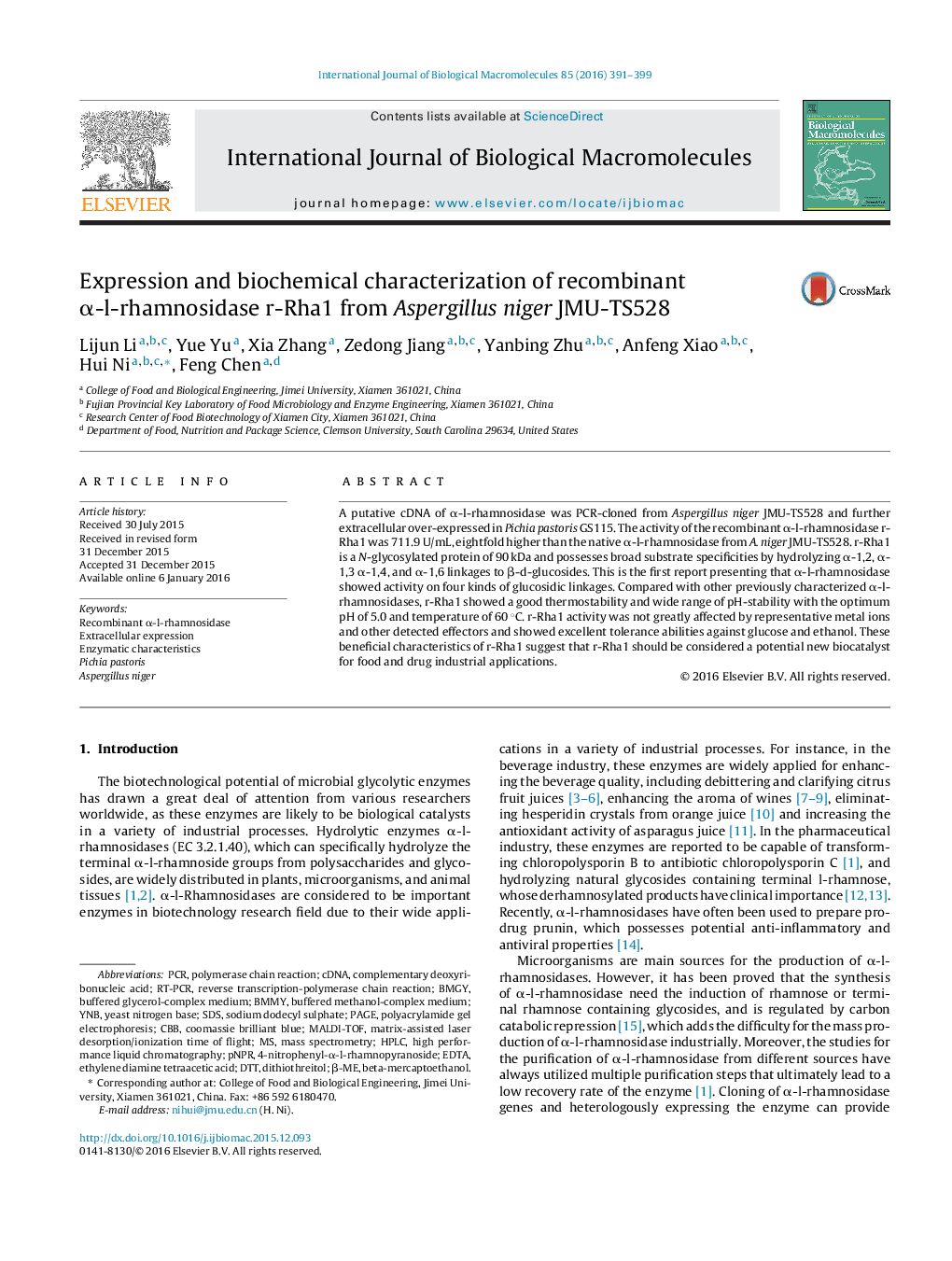| Article ID | Journal | Published Year | Pages | File Type |
|---|---|---|---|---|
| 1985836 | International Journal of Biological Macromolecules | 2016 | 9 Pages |
•We cloned a putative cDNA of α--rhamnosidase from Aspergillus niger JMU-TS528 and extracellular over-expressed this cDNA in Pichia pastoris GS115.•The activity of the recombinant α--rhamnosidase r-Rha1 is eightfold higher than the native enzyme.•r-Rha1 is a N-glycosylated protein possessed broad substrate specificities, a good thermostability, wide range of pH-stability, and excellent tolerance abilities against glucose and ethanol.
A putative cDNA of α-l-rhamnosidase was PCR-cloned from Aspergillus niger JMU-TS528 and further extracellular over-expressed in Pichia pastoris GS115. The activity of the recombinant α-l-rhamnosidase r-Rha1 was 711.9 U/mL, eightfold higher than the native α-l-rhamnosidase from A. niger JMU-TS528. r-Rha1 is a N-glycosylated protein of 90 kDa and possesses broad substrate specificities by hydrolyzing α-1,2, α-1,3 α-1,4, and α-1,6 linkages to β-d-glucosides. This is the first report presenting that α-l-rhamnosidase showed activity on four kinds of glucosidic linkages. Compared with other previously characterized α-l-rhamnosidases, r-Rha1 showed a good thermostability and wide range of pH-stability with the optimum pH of 5.0 and temperature of 60 °C. r-Rha1 activity was not greatly affected by representative metal ions and other detected effectors and showed excellent tolerance abilities against glucose and ethanol. These beneficial characteristics of r-Rha1 suggest that r-Rha1 should be considered a potential new biocatalyst for food and drug industrial applications.
